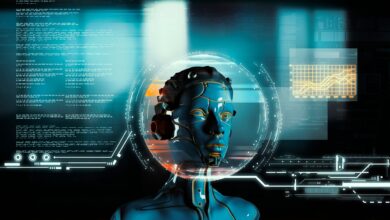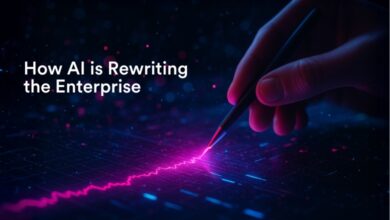
The last two years have brought a dramatic change in the technology space, as AI has empowered consumers with its quick-turn ability to digest, consolidate, and serve back the most relevant information from broad sets of data. For the advertising industry—built on a base of communication, content, and data points—this change raises all kinds of new questions. What will the future look like? How will we leverage AI to better inform and execute our work? How will it change the ways we deliver that messaging and drive impact for our clients?
More specifically, for those of us working in digital territories, how will AI impact the relevance of experiences such as websites and search engines?
In a remarkably short time, AI has transformed how people search for online content. Tasks that once required tens or sometimes hundreds of clicks across multiple digital touchpoints can now be accomplished with a single AI query. At first glance, this is a clear indicator that “traditional digital” is on its way out. But a closer look reveals a more complex and intertwined relationship between traditional and emerging methods. To better understand how the future of the digital customer journey (and in turn, experiences like websites and search) may change, it’s important to unpack how these AI tools work in the first place.
Fundamentally speaking, generative AI operates through a combination of logic models and data sets. Data sets can be limited to a single folder of documents or be a much larger cross-set intended to broadly represent the internet. Logic models are trained to interpret that data in order to perform specific tasks. Some AI tools use logic models trained to digest and reinterpret imagery. Other models collect and amalgamate written content. Each model has its own specific approach to prioritizing data, but it’s important to note that AI is far more complex and nuanced in this regard than a search engine.
Let’s use the example of a user looking for a suggestion of where to go to dinner if they want an upscale experience at a local Italian restaurant. A traditional search engine would return results comprised of restaurant websites and reviews, as well as scattered other content related to Italian dining in their local area. The order of these results might be driven primarily by search optimization, traffic volume, and content quality. These ranking criteria may closely approximate the user’s priorities in finding the right restaurant (as most search engines aim to do). But there is room for error amidst all the search-optimized and marketing-architected content competing for algorithmic attention.
A similar query conducted with an AI tool would leverage a more nuanced evaluation process to inform a more personalized response. To search for the right local restaurant, an AI tool wouldn’t just look for websites to rank—it would digest articles and reviews, evaluate detailed traffic metrics, and conduct a range of other activities aligned with the evaluation model it was trained upon and the data set used to train it. It might be trained to ignore certain aspects of content optimization (such as schema markup) but prioritize others (such as best-practice writing and UX architecture). Further, if instructed to do so, the AI would learn from past queries submitted by the user. In combination, all these inputs might yield a more holistically informed and accurate result—something more personalized.
So, what does this all mean for the future of websites and optimized search?
For starters, generative AI tools are trained on sets of data that partially consist of search-optimized website content. Logic model training deems this content high quality and trustworthy—or not—using many of the same criteria as best-practices digital design, writing, and SEO. So, while users may rely more and more on AI tools to conduct their initial queries, the existence and visibility of high-quality web experiences will remain critical for informing the responses those AI tools serve up.
Further, website-style experiences don’t just exist for research purposes. They offer up features that provide useful value. Whether it’s purchasing products and services, engaging with a user account, or even just confirming a reservation at your new favorite Italian restaurant, these activities require interaction on a website or app (even if AI is used to conduct these tasks—as some can now do).
Finally, it’s worth considering how we define a modern digital experience. The growing prevalence of headless content systems allows businesses and brands to fluidly publish digital content across a wide range of touchpoints. This model requires less reliance on a central content hub (such as a singular website). Instead, it defines a web experience more broadly, maintaining consistency of communication across a whole ecosystem. This can align with the preferences of trained AI models, which may favor content derived from a broader range of touchpoints.
In summary, AI tools won’t make digital channels like websites and traditional search obsolete. But they will evolve the definition of what constitutes a best-in-class digital experience, and how we should measure success and user value in the digital space. As user behavior shifts and the digital customer journey takes new (and less linear) routes, the best experiences may become more multifaceted, even if they continue to rely on many of the same behaviors and touchpoints they have for years. Key shifts—both in how we design these touchpoints and how we measure performance—will be necessary to ensure relevance as AI continues to gain steam and power. So, the real question isn’t whether these critical digital products and services will become obsolete. Instead, it’s: How will they evolve to support a new reality?





